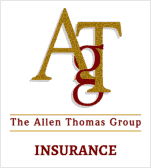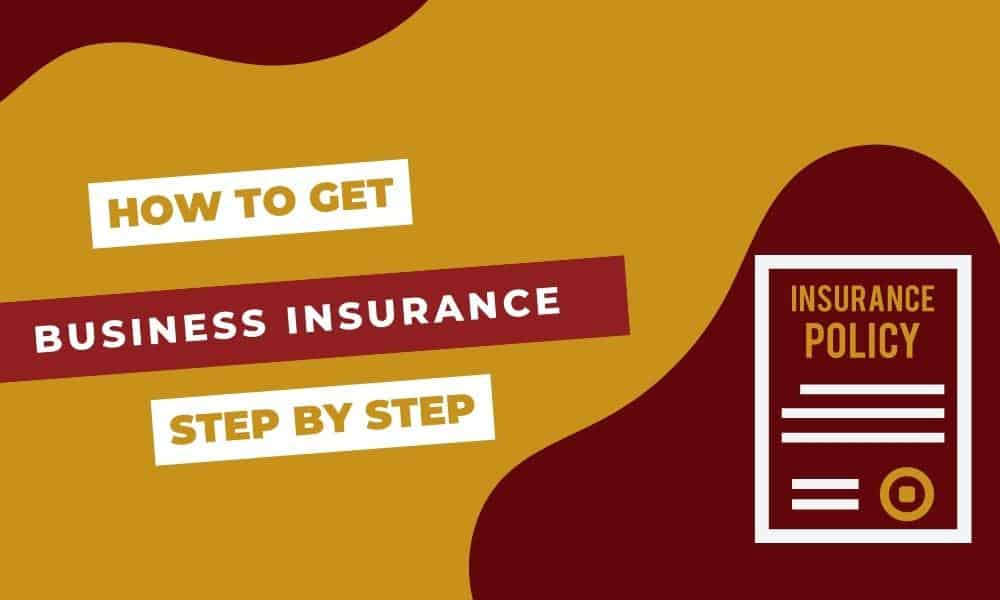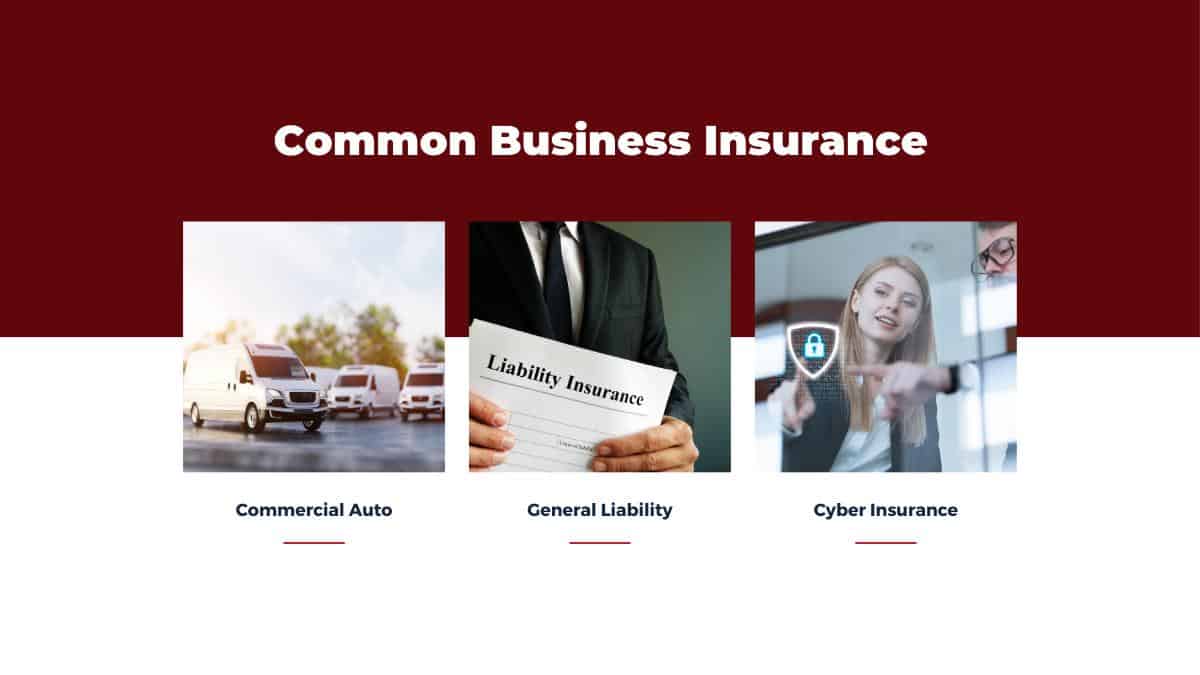Successful entrepreneurs know that building a small business takes years of hard work, blood, sweat, tears, and hours spent sitting behind their computer screens.
A single unanticipated event could wipe out all your hard work overnight!
Fires to frauds – disasters don’t discriminate between Fortune-500s or small shops when it comes to striking them down, which makes having adequate protection not just essential but essential for survival. Having sufficient business coverage is vitally important. As we navigate this comprehensive guide’s complex realm of small business insurance, let us make this journey together! Our goal is to demystify its inner workings so you can make informed decisions for your enterprise’s long-term viability – its lifeline depends on it!
Our Ultimate Guide to Small Business Insurance provides a comprehensive overview of various forms of coverage (such as general liability, workers’ compensation, cyber liability, professional liability, and property coverage), legal requirements in multiple states for small businesses, factors that determine which policies should be purchased (like business size, location, number of employees products/services offered cybersecurity threats property ownership, etc.) as well as tips for selecting a reputable broker – providing a holistic approach that empowers small business owners choose confidently policies explicitly tailored to their unique needs.
Types of Small Business Insurance
It is crucial that when it comes to protecting a small business, having adequate insurance coverage is of utmost importance. With different kinds of policies designed to meet varying aspects of your company’s needs and offer good protection. Here is an overview of some popular forms of small business coverage:
- Commercial General Liability Insurance: This form of protection offers your business protection from third-party claims related to bodily harm, property damage, or personal injuries sustained on company property or by employees. Additionally, this coverage also extends to legal fees, medical expenses, as well as settlements or judgments against such claims that may arise.
- Workers’ Compensation Insurance: Workers’ compensation insurance is an integral component for businesses that employ others. This coverage protects them against medical costs and lost wages associated with work-related injuries or illnesses at your business.
- Cyber Liability Insurance: Due to our reliance on digital platforms and data storage solutions, cyber liability insurance has become essential for small businesses. It helps mitigate losses caused by data breaches, cyberattacks, or other cybersecurity incidents.
- Errors & Omissions Insurance: Errors & Omissions insurance can benefit small businesses that provide professional services or advice, like consultants and accountants. It covers legal expenses associated with claims alleging negligence or mistakes in your services as well as potential damages that result.
- Property Insurance: Businesses that own or operate physical locations or possess assets such as equipment and inventory can benefit significantly from property insurance, which offers coverage against perils such as fire, theft, vandalism, and natural disasters that damage them.
- Directors and Officers Liability Insurance: This coverage protects directors and officers if they are sued for allegedly improper acts conducted while serving in their roles within a business.
Now that we understand the different types of small business insurance available let’s delve deeper into property insurance. According to the U. S. Small Business Administration, over 90% of small businesses across America have some commercial policy in force.
Property Insurance
Small businesses utilizing physical assets or operating from physical locations understand the significance of property insurance as one of their essential forms of coverage, protecting from various perils such as fire, theft, vandalism, and natural disasters that threaten these assets or locations.
Imagine owning a bakery and a fire breaks out suddenly, damaging its premises and leading to extensive equipment and inventory losses. Without property insurance in place, replacing these losses out of pocket would be your responsibility; with it in area, however, repairs, replacements, renovations, and any necessary costs would all be covered by your policy.
Property insurance policies protect from business interruption expenses when covered perils threaten the operations of your business. In our bakery example, had the fire been so severe as to temporarily force you to close the shop? At the same time, repairs are made, and property insurance could cover losses related to this time.
Property insurance policies come with various coverage options and limits, with some covering only named perils from within their policy document. In contrast, others provide broadened coverage that applies to all risks except those explicitly excluded. Your policy will outline these details, along with deductibles and coverage limits specific to you.
Now that we have discussed the importance of property insurance for small businesses let’s go over some key considerations when selecting coverage.
Critical Considerations for Choosing the Right Small Business Coverage
Liability insurance is an indispensable component of small business insurance, protecting against financial losses and liabilities associated with normal operations. It covers legal fees, settlement costs, and damages if someone files a suit against your business (such as customers, clients, or vendors).
Imagine this: you operate a bakery and accidentally spill hot coffee onto a customer, causing burns and possible injury. In such an instance, liability insurance would cover medical expenses and legal or settlement fees resulting from such an incident.
Liability insurance comes in various forms to meet your specific business needs. General liability policies provide coverage against claims for bodily injury, property damage, personal injury (such as slander or libel), advertising mistakes, and accidental injuries occurring on your premises or caused by products or services provided by you.
Let’s say you run an event planning company, and a guest trips over loose cables at one of your events and sustains injuries. General liability coverage would assist in covering both their medical and potential legal costs should they decide to sue over what happened.
Professional Liability Insurance (commonly known as errors and omissions insurance) provides another form of essential liability coverage. It’s precious for businesses providing advice or services where mistakes or negligence could cause financial losses for clients, giving protection from claims of professional errors or failing to deliver promised services as promised.
Imagine being a consultant providing financial advice. If one of your clients experiences significant losses due to perceived errors in your direction, professional liability insurance could cover the costs of defending yourself against their claims and any subsequent settlements that might occur.
Now that we have covered the value and various forms of liability insurance for small businesses, let’s turn our attention to another vital form of coverage – workers’ compensation.
Understanding Work Comp Coverage
Workers’ compensation insurance provides benefits and medical coverage to employees injured or sickened during their employment, with most states mandating this coverage – with exceptions depending on the size and nature of business operations.
Imagine owning a construction company and having one of your employees fall from a ladder and break their leg while working. Workers’ compensation insurance would cover medical costs, rehabilitation costs, and possible wage replacement while they recover.
Workers’ compensation insurance serves two primary goals for employers – protecting employees and shielding them against possible lawsuits related to workplace injuries and illnesses. By offering this protection, employers can avoid costly legal battles while guaranteeing their employees timely care in times of injury or illness.
Note that workers’ compensation insurance typically operates on a no-fault basis, meaning benefits are available regardless of who was at fault for an injury or illness, ensuring prompt assistance to employees without prolonging litigation proceedings.
As we’ve already explored liability and workers’ compensation insurance, small business owners need to identify their unique insurance requirements for each type of business they own or run. Let’s examine some examples of specific needs based on different types of industries.
Analyzing Business Type-Specific Insurance Needs
Small businesses face unique risks and liabilities depending on the nature and industry of their industry or business type, so their coverage needs must be assessed individually.
Restaurant owners might focus on general liability coverage to cover customer injuries or property damage while considering food spoilage coverage or liquor liability liabilities if they offer alcoholic beverages. Meanwhile, tech startups may prioritize cyber liability policies to guard against data breaches and intellectual property theft.
Let’s consider another example: a construction company. With workers operating in potentially hazardous environments, such as an earthquake zone, they would require workers’ compensation insurance as financial protection against work-related injuries or illnesses to employees and contractors’ liability coverage for property damage caused during projects.
Establishing the risks specific to your business type is vital in identifying what types of insurance coverage are necessary. Factors to consider may include products or services you offer, employee counts, your location, and any contractual requirements from clients or partners – this way, you can be confident your organization is adequately protected. Taking steps to identify and address risks early can ensure you’re well-protected!
Now that we understand the significance of assessing insurance needs based on business type let us focus on how insurance plays a part in risk management.
Mitigating Risks The Right Way
Risk is unavoidable in doing business, but managing them effectively is essential to long-term success and sustainability. That is where insurance plays an important role – mitigating threats while providing financial protection.
Insurance is a safeguard, shifting the costs associated with unexpected events – like accidents, natural disasters, lawsuits, or employee injuries – away from your business and onto an insurance provider. By paying regular premiums, you ensure that if such events arise, you won’t bear sole financial responsibility for their consequences.
Imagine that a retail store experiences a fire that damages its inventory and premises to such an extent that the costs associated with repairs, replacements, and potential income lost during its closure would fall solely onto its business owner without property insurance in place to help cover repairs, replacements and potential income lost during any likely closure period. However, with appropriate coverage in the area, they could file a claim and receive compensation to help recover from this incident.
Insurance policies also help businesses protect themselves against legal liabilities. For instance, general liability policies offer protection if they’re found liable for bodily injury or property damage caused to third parties during operations, potentially saving from costly legal fees and damages awards that might otherwise come against them.
Insurance coverage can significantly affect both credibility and appeal when dealing with clients or partners who require proof of coverage before engaging in transactions with you. It shows your commitment to protecting their interests while mitigating risks that might also impact them negatively.
Understanding the role of insurance in risk management provides small businesses with invaluable insight into how it can safeguard their operations. By carefully evaluating their needs according to business type and placing appropriate coverage, small businesses can lay down a strong foundation for future success.
Insurance is vital in mitigating potential threats and financially protecting small businesses. Acting as a safety net, insurance can transfer the costs associated with unexpected events like accidents, natural disasters, lawsuits, or employee injuries directly to an insurance provider – which boosts credibility with clients or partners who require proof of coverage before engaging in any business transactions. Understanding its role in risk management provides small businesses with invaluable insight into its ability to safeguard operations while building long-term success.
Insurance to Mitigate Business Risks
Running and growing a small business entails certain inherent risks. From property damage to legal liabilities, these dangers can have severe ramifications for its financial well-being and operation – which is why small business insurance is essential as a safety net to mitigate such hazards and protect you against unexpected events.
General liability insurance protects your business against claims of bodily injury or property damage caused by its products, services, or operations. This coverage can cover medical expenses, legal fees, and damages awarded to injured parties.
Imagine owning a bakery and having one of your customers slip on an unsafe floor in your shop and injure themselves; without general liability coverage in place, they might hold you personally liable for medical bills and potential lawsuits associated with their injury; with adequate coverage in the area however, these costs would be covered on behalf of your insurance provider and spare your business from financial ruin.
Property insurance protects physical assets like buildings, equipment, inventory, and furniture from fires, theft, or natural disaster. Rebuilding damaged assets is more accessible with this coverage, ensuring minimal interruption to business operations.
Now that we understand how insurance can reduce business risks, let’s delve into some key considerations when selecting an insurance provider for our small businesses.
Finding an Insurance Provider
Selecting the ideal provider is an essential decision that requires careful thought. Here are a few key points to keep in mind during this selection process:
Assess Your Needs: Start by taking an in-depth inventory of all the risks your business is exposed to – these could include industry regulations, location factors, number of employees offered products/services provided, and potential cyber threats – before deciding on which types of insurance policies would best serve your organization.
Once you’ve identified your insurance needs, investigate various providers and policies available on the market. Look for insurers with experience working with businesses in your industry and those whose policies match your specific requirements perfectly.
Financial Stability: Selecting an insurer with solid financial credentials is paramount to ensuring they possess enough resources to pay claims in an unforeseen event.
Customer Service: Be mindful of the level of customer service insurance providers offer. A responsive and helpful insurer can make a big difference when filing claims or needing support during difficult times.
Premiums and Deductibles: Carefully consider the premium costs and deductibles associated with various insurance policies before choosing one that adequately meets your needs. When making this decision, affordability should not be your sole criterion; ensure the coverage provided under each plan meets them adequately.
Reviews and Recommendations: Read reviews written by other small business owners with experience dealing with various insurance providers, as they can offer invaluable insight into the reliability, claims handling process, and overall customer satisfaction of these insurers. Check out The Allen Thomas Group reviews.
Remember that finding an insurance provider meeting your unique business requirements requires time. Consider various insurers and compare policies based on what best fits your company’s needs.
As an owner of a small consulting firm, ensuring you have professional liability (also referred to as errors & omissions insurance) can protect you against claims of negligence or poor advice given. Researching providers specialized in this type of coverage will help ensure you find one best suited to your company’s needs.
With these considerations in mind, you can confidently navigate the selection process and choose an insurance provider who provides reliable protection for your small business.
Cost Evaluation of Insurance Plans
Evaluating the costs of various business insurance plans is critical in making informed decisions for your small business. Evaluating costs requires going beyond simply looking at price tags – it requires considering all factors that influence total expenditure as part of an evaluation process that will ultimately help determine which plan best meets your business needs and budget constraints.
When starting any business, one of the first factors to remember is which insurance policies to purchase. Common types include general liability, professional liability, commercial property, and workers’ compensation insurance; each has its specific use and covers particular risks related to an industry or profession.
Coverage limits and deductibles are two other key components that influence the cost of insurance.
Coverage limits refer to the maximum amount an insurance company will cover per claim; these can differ significantly across policies; therefore, you must assess what coverage your business requires. Deductibles come into play when filing claims – they represent the portion of a loss that must be covered before your policy takes over; choosing higher deductibles may help lower premiums but will incur more extraordinary out-of-pocket expenses should there be a claim.
Business property value and revenue are integral in determining insurance costs. Your property value helps insurers assess risks more accurately, while revenue gives insurers insight into your size and overall financial stability, ultimately shaping how they perceive risk.
Your insurance costs depend heavily on the number of employees at your business. An increase in employee count often represents increased exposure to risk if your industry involves potentially hazardous activities.
Finally, your claims history is an important consideration. Insurance carriers typically assess risk by reviewing past claims made by businesses; frequent or high-dollar claims could increase premiums as insurers view you as more of a threat than previously.
Assume you operate a small construction business; given its nature, injuries and property damage risks associated with your work are relatively high compared to what might occur during an office job with lesser perils associated with injuries or property damages; your premiums will need to reflect this increased exposure.
As these variables can impact insurance costs differently depending on your business’s unique characteristics, industry, and location, working with an experienced insurance agent can be instrumental in helping you navigate through this thorny maze of coverage options that best fit your specific needs.
After we have explored all aspects of evaluating insurance costs for small businesses, let’s delve into more depth into the factors affecting them.
Factors Affecting Insurance Cost
Knowing the factors influencing insurance costs is crucial to making informed decisions for your small business. Many elements come into play when insurers calculate premiums and policy rates:
- Policy Limits: An insurance company’s per-occurrence limit and aggregate limit represent the maximum amounts it will pay out per incident or over a specific time frame; as a rule, higher policy limits result in higher premiums due to increased coverage from their insurer.
- Deductibles: Your deductible refers to the out-of-pocket expense you must cover before your insurance coverage kicks in, and choosing a higher deductible could lower your premiums by accepting more financial responsibility should any claims arise.
- Industry: Industries present different levels of risk, which impacts insurance premiums. High-risk industries such as construction or healthcare often carry higher premiums due to increased potential accidents or liability claims.
- Location: Crime rate, natural disaster frequency, and state laws can affect insurance premiums for businesses operating in certain areas, such as those susceptible to specific perils. Companies operating there could face higher premium costs.
Think of it like car insurance: If your neighborhood has high crime rates and car theft is rampant, your premiums could likely increase accordingly.
Additional Factors
Business Property Value: The value of your business property plays a pivotal role in its insurance costs since assets with higher values generally present greater risk and potential for more significant losses.
Business Revenue: When reviewing your business insurance premiums, insurers often look at its annual revenue as an indication of its size and stability. Businesses with higher revenue may face higher premiums as more extensive operations can pose more risks that require insurance protection.
Number of Employees: Increased employee presence means greater exposure to risk, with more individuals involved in daily operations. An increase in employees could also increase workers’ comp insurance premiums.
Insurance Purchased: Your choice of policies can enormously impact overall costs for your business, each carrying its premium depending on what it covers.
Claims History: Insurance companies analyze a business’s claims history to assess their level of risk. Frequent or expensive claims could increase premiums significantly.
Understanding these factors and their effect on insurance costs enables small business owners to make educated decisions when selecting coverage options. As every industry, location, and circumstance differs, these aspects must be assessed within the context of your specific industry, place, or event.
What are some common misunderstandings of small business insurance?
Common misperceptions include believing that personal policies cover business risks, that insurance is unnecessary in specific industries, and that coverage is too costly for small companies. But this assumption is inaccurate; individual insurance policies generally do not cover risks related to business activity, leaving small businesses exposed.
Furthermore, each industry faces unique threats which can be mitigated with insurance coverage. The insurance cost will depend on factors like industry type and company size; options are available to fit various budgets.
Are there any government regulations or requirements dictating that small businesses possess specific insurance coverage?
Yes, government regulations and requirements impose requirements upon small businesses to secure certain forms of coverage with insurance policies. Specific regulations vary based on country and industry; however, typical examples include workers’ compensation insurance – mandatory in many U. S. states – and professional liability coverage, which professions like healthcare or legal services may need.
According to a National Association of Insurance Commissioners survey, 8 out of 10 small businesses possess insurance coverage; most cite legal requirements as their primary motivation (NAIC, 2021). Therefore, small companies must familiarize themselves with any requirements in their specific location to meet compliance and secure operations.
How can small businesses ensure they are receiving sufficient coverage from their insurance policies?
Small businesses can ensure their insurance policies provide adequate coverage by following several steps. First, they must assess all risks and liabilities unique to their industry and size to determine which policies will provide appropriate coverage. Small business owners should regularly review their policies to make sure that coverage aligns with any changes in operations or industry regulations. Consulting an insurance broker or agent for guidance can also be invaluable in navigating complex policy options.
What should be included in a small business insurance policy?
An effective small business insurance policy must include various forms of coverage to address common risks. Liability coverage should include claims related to bodily injuries or property damage, while property coverage provides security against physical loss. As part of your business continuity planning, consider professional liability insurance to guard against allegations of negligence, errors, and omissions. Workers’ compensation coverage protects medical costs associated with injuries on the job and lost wages from work-related incidents.
With cyber-attacks becoming ever more frequent, cyber liability insurance has become ever more essential to small businesses’ protection in today’s digital landscape. According to the Insurance Information Institute, an estimated 40% of small businesses will experience some cyber attack, making this coverage highly recommended in an otherwise hostile online environment.
How Much Does Small Business Insurance Typically Cost?
The costs associated with small business insurance depend on various factors, including the type and size of your business, industry risks, location, coverage limits, claims history, and claims history. On average, small businesses spend between $500 to $3,000 annually for premiums. Though this estimate could change depending on individual circumstances, it is recommended to seek multiple quotes from reliable insurance providers to get an accurate idea of your specific costs.
Empower Your Small Business Journey Now With The Allen Thomas Group
In conclusion, as small business owners, you know the importance of protecting your investment. But finding the right insurance can be overwhelming.
That’s where The Allen Thomas Group comes in. With our ultimate guide to small business insurance, we’ve taken some of the guesswork out of the equation.
But we didn’t stop there. If you still need more, here are some additional small business tips.
Look, we know you’re busy running your business, but we also no you need the right coverage.
So take the first step towards protecting your small business today by clicking on the button below to get a quote.
Even if you already have a policy, let’s review it to make sure you’ve got the right coverage in place to protect your business in case the worst happens.
Author


















